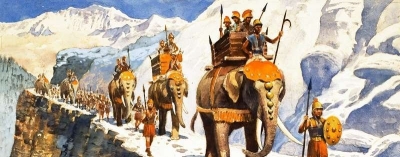WHAT DO CHRISTIANS BELIEVE?
 Christianity is a religion that has one God. Its followers — Christians — believe that Jesus Christ was the Son of God and that he lived to show people the way to eternal life with God through the forgive-ness of sins (wrongdoing). A key Christian belief is that Jesus was killed by his enemies and then rose from the dead to join God in heaven. Christianity is the world’s largest religion, with more followers than any other.
Christianity is a religion that has one God. Its followers — Christians — believe that Jesus Christ was the Son of God and that he lived to show people the way to eternal life with God through the forgive-ness of sins (wrongdoing). A key Christian belief is that Jesus was killed by his enemies and then rose from the dead to join God in heaven. Christianity is the world’s largest religion, with more followers than any other.
Christianity traces its beginning to the miraculous birth, adult ministry, death and resurrection of Jesus of Nazareth, known as Jesus Christ. Over 2000 years ago in Palestine (today's Israel), Jesus was born into a humble Jewish family. His mother was a young peasant woman named Mary.
Christians believe that his father was the Holy Spirit of God, making Jesus both fully human and fully divine. His earliest followers came to believe that he was the Messiah, or messenger, sent by God to free God’s people from slavery, sin, and death. God sent his son Jesus in human form so that people would better understand God as a caring and loving parent.
Jesus lived and experienced the suffering of humans. Jesus healed the sick and told stories, or parables, and preached sermons that taught what God wanted people to do – to love God with all their hearts and love their neighbors as themselves. Jesus taught by example. By being loving and forgiving himself, Jesus taught others to be loving and forgiving - especially toward those who were considered outcasts in society. This is the central message and style of Jesus' teaching.
During his adult ministry, Jesus built up a loyal following, led by his twelve disciples. But Jesus also made enemies among the religious and political leaders of his time. In the end, these powerful leaders were so threatened by Jesus' growing following that the Roman governor sentenced Jesus to death and had him crucified. The third day after Jesus’ death, his followers found his tomb empty and discovered that he had been raised from the dead. Christians believe that the painful sacrifice of Jesus' life on the cross shows how much God loves God's people. Jesus paid with his life on Earth for the sins of the world.
Christians believe that in raising Jesus’ from the dead, God showed that Jesus’ message of love and forgiveness was more powerful than death, and that believing in Jesus and following the example of his life and his teaching would lead to eternal life after death. The resurrection (rising from the dead) is the sign of God’s salvation offered to all people.
After his resurrection, Jesus Christ’s followers spread his message throughout the world, creating the Christian Church. Today there are about two billion Christians living all over the world.
Picture credit: Google

